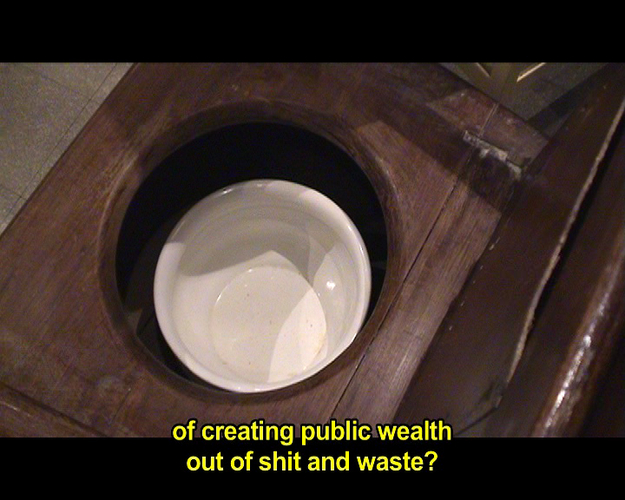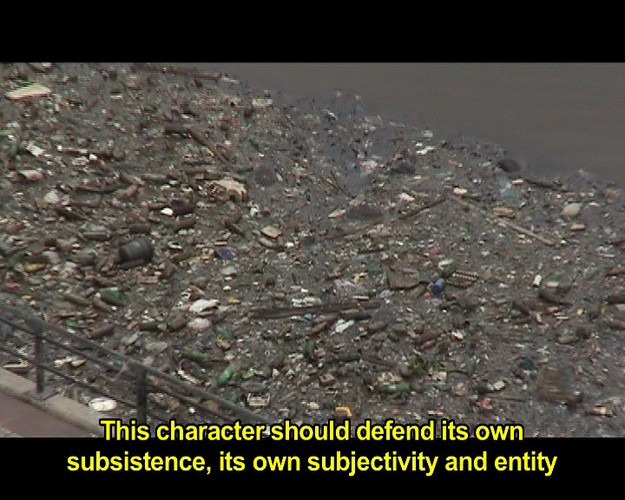“Staging Cities: The urban shit of the Matanzas-Riachuelo river basin. Buenos Aires 2009.”
video.14 min.
Concept, production and direction: M7red. Mauricio Corbalan, Pio Torroja.
Camera and editing: Julian d`Angiolillo
Additional camera: Julia Masvernat.
Production team: Paola Salaberri, Martin Dipeco, Noelia Leonzio.
Sound: Pablo Chimenti, Hernan Kerllenevich
Acknowledgements: Museo de Bellas Artes de La Boca Benito Quinquela Martín, Museo Histórico Hospital Bernardino Rivadavia, Fundación por La Boca, agrupación
musical “Los hijos de Zas”.
Project hosted by Het Blauwe Huis, Ijburg, The Netherlands.
With the support of CCEBA. Centro Cultural de Espana en Buenos Aires.
Staging cities experiments with new ways of staging public issues.
How cities are populated?
Entities, things, infrastructures, people, machines,groups, institutions, characters... How they live together? Which are the conflicts that gather and separate them?
“Staging Cities/Ciudades en escena” takes the problem of staging the city, its systems, beings, entities and their conflictive coexistence.
To stage this diversity is a political bet in itself.
Parliaments are the usual stage where sometimes cities and citizens can look at themselves. But parliaments are just one way of many to stage public issues.
The challenge at Buenos Aires is to set up a new assembly device to give voice to emergent characters in order to expand political imagination.
Staging Cities set up the challenge of consider a collective building technique of characters and scenarios as a new political scenic device.
Staging cities began in the year 2006 at Het Blauwe Huis, as an experiment of urban discussion which connected the cities of Ijburg/Amsterdam and Buenos Aires in a role play game in real time using instant messaging systems on internet.
The scenario built up for Buenos Aires fictionalized a clash between the underclass and the governmental board and brokers that manage Puerto Madero, a new urbanized area, which is the most exclusive and expensive of the city center.
The scenario that emerged in Amsterdam staged the conflict between the local community and the Muslim immigrants as a continuation of the racial disturbs which happened in France during 2005.
In the year 2007 a discussion process was held during eight months at the city of Porto Alegre, Brazil, as part of the Mercosul Art Biennale.
The scenario which emerged this time was the central area of the city of Porto Alegre.
The occupation of the city center by illegal traders and the subsequent abandonment and decay of the dwellings located at the area.
An special “assembly hall” was made at the biennale to stage the sessions. The device was composed of “video-cabins” for actoral training of citizens and a “debate room” with a screen and a table displaying 8 computers connected between them.
From that experience, the Institute of Architects of Brazil of Rio Grande do Sul, commissioned m7 to deliver a research program and the design of a specific room for the “Teatro do chat” at their headquarters located in the central area of the city. This device is intended to foster the debate and to explore the alternative futures for the city of Porto Alegre
But the work focused on local scenarios and human characters became insufficient to understand the growing complexity of the urbanization phenomena. This was made visible at the beginning of the setting up of the new scenario for the city of Buenos Aires: the Matanzas-Riachuelo river basin.
From Spanish colonial times, the Riachuelo is more an ecological and political battlefield than an harmonic ecosystem. The ecological issues that are set up in this scenario appear as controversies and uncertainties between actors of very different type. Black waters, precarious settlements, governmental agencies, polluting industries, technicians, waste, etc.
We can call an ecosystem as an “assembly without walls”, where many actors can have a “voice”.
How to make an urban theater where humans and not humans can have a voice in this public controversy?
An scenic device was designed to develop this scenario. It was composed by a table with six experts from diverse areas and an “artificial voice” with a script which interrogated them. The goal of the device was to make appear and give voice collectively, to the main non-human actor of this scenario: the “urban shit”of the basin.
This was the first experience registered with this device and we are looking further to future sessions with other actors in order to expand the scenario.

